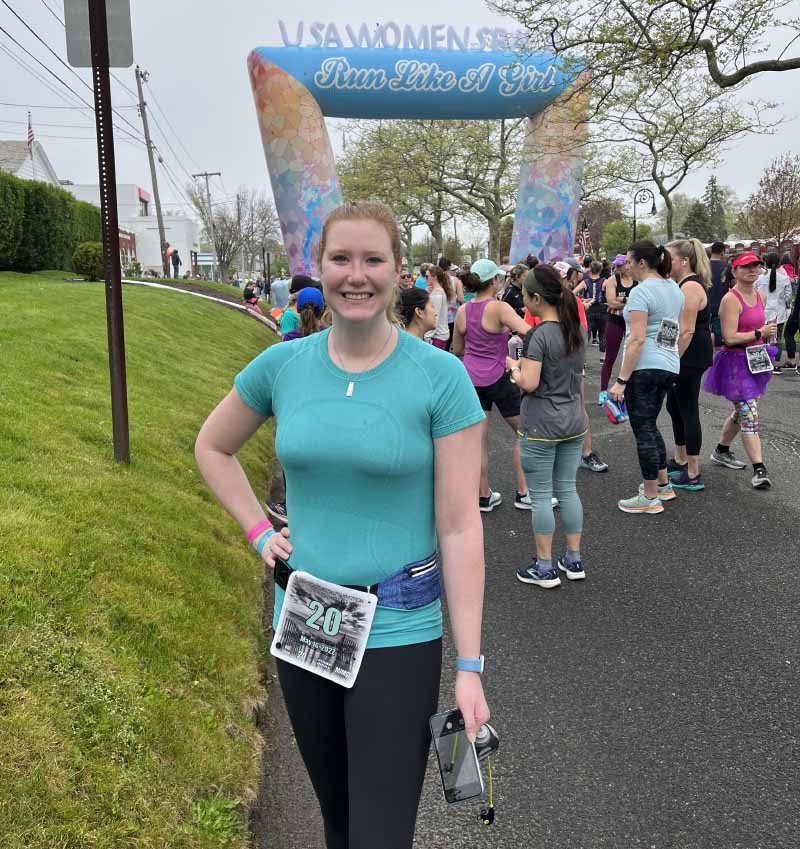Stroke at age 32 prompted heartfelt change in career path

Tired of being housebound during the pandemic, Sarah Rood signed up for a half marathon and started jogging regularly around her neighborhood in Wyandotte, Michigan, to prepare.
"Running and I have a love-hate relationship," she said. "I'm not a good runner or a fast runner. But I wanted to prove to myself that I could set a goal, work toward it and achieve it."
In February 2022, Rood's arm went numb. Suspecting a pinched nerve, she called her mother, who noticed that her speech was slurred. When Rood looked in the mirror and saw that her smile was uneven, her mother called 911.
By the time the ambulance arrived, Rood could no longer articulate her thoughts clearly, and she had trouble texting her friends. "That's when I lost it emotionally," she said. "Something was not OK."
Rood's symptoms started to improve in the ambulance. She could speak more clearly and move her arm normally again. Although still anxious, she started to feel like things would be OK. "I was 32 with no history of major medical issues," she said. "None of this should be a thing."
At first, the paramedics thought Rood's symptoms might be caused by Bell's palsy or anxiety. She had struggled with anxiety since she was young and had a particular fear of medical issues.
But a CT scan at the hospital revealed that she had suffered a stroke caused by a blood clot on the left side of her brain. After she stopped sobbing, Rood called one of her best friends and asked her to take care of her Husky mixes, Rory and Captain, while she stayed in the hospital for further tests and observation.
Later that day, an ambulance transported Rood to a larger hospital in Detroit that was better equipped to care for stroke patients. Because her symptoms had subsided, doctors there decided against treating her with a commonly used type of clot-busting drug called tPA. "They didn't think it was necessary and said that the risk outweighed the benefits," she said.
Instead, they treated Rood with intravenous blood thinners, did further tests and continued to monitor her condition.
Many strokes in young people are caused by a small hole between the heart's upper chambers called a PFO, or patent foramen ovale, which can allow a blood clot to travel to the brain. But testing revealed she didn't have a PFO. Doctors also performed blood clotting testing but did not find a significant problem.
Not knowing what had caused the stroke was the worst part. Worried that it would happen again, she fretted about driving or being alone at home. When she woke up in the middle of the night with numbness and tingling in her hand, she drove herself to the emergency room and was admitted for observation. As it turned out, she had carpal tunnel syndrome.
While anxiety was a constant companion, Rood was feeling better and better physically. Three months after her stroke, she participated in her second half marathon in the Hamptons in New York. While not beating her previous time, she was able to successfully complete the course.

A few months later, about a year after her stroke, Rood participated in another half marathon at a popular theme park in Florida, improving upon her past times. "It was celebratory," she said. "I realized that I can still do this."
Feeling personally connected to the mission of the American Heart Association, Rood applied for and landed a job as a marketing communications director for the AHA in Southeast Michigan. And determined to raise awareness of stroke, especially in young women, Rood often quizzes her friends about the signs and symptoms of stroke. Her message is direct.
"If anything feels off or abnormal, it's important to get checked out quickly," she said. "Even if you're young and healthy, it could still happen to you."





